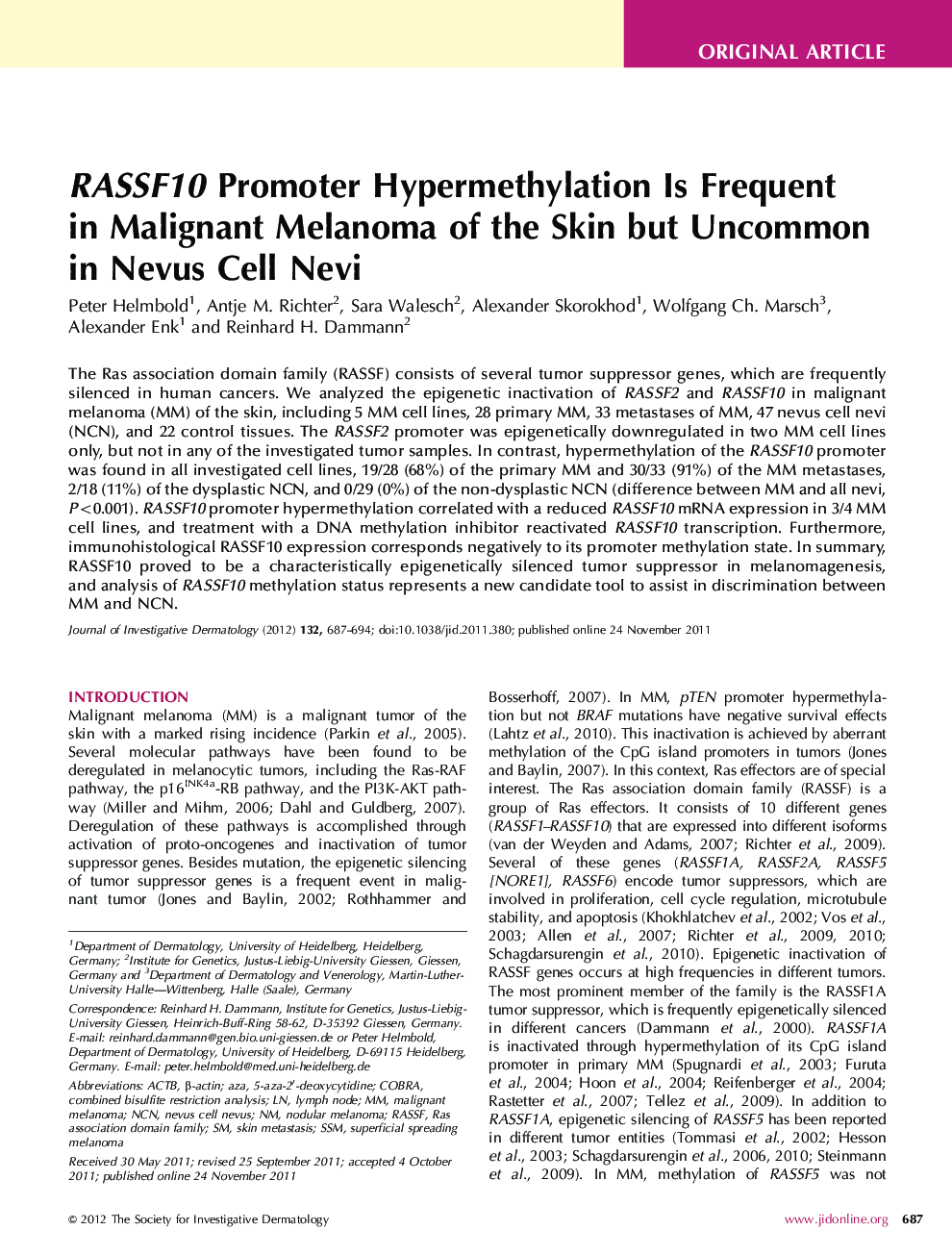| Article ID | Journal | Published Year | Pages | File Type |
|---|---|---|---|---|
| 6078468 | Journal of Investigative Dermatology | 2012 | 8 Pages |
Abstract
The Ras association domain family (RASSF) consists of several tumor suppressor genes, which are frequently silenced in human cancers. We analyzed the epigenetic inactivation of RASSF2 and RASSF10 in malignant melanoma (MM) of the skin, including 5 MM cell lines, 28 primary MM, 33 metastases of MM, 47 nevus cell nevi (NCN), and 22 control tissues. The RASSF2 promoter was epigenetically downregulated in two MM cell lines only, but not in any of the investigated tumor samples. In contrast, hypermethylation of the RASSF10 promoter was found in all investigated cell lines, 19/28 (68%) of the primary MM and 30/33 (91%) of the MM metastases, 2/18 (11%) of the dysplastic NCN, and 0/29 (0%) of the non-dysplastic NCN (difference between MM and all nevi, P<0.001). RASSF10 promoter hypermethylation correlated with a reduced RASSF10 mRNA expression in 3/4 MM cell lines, and treatment with a DNA methylation inhibitor reactivated RASSF10 transcription. Furthermore, immunohistological RASSF10 expression corresponds negatively to its promoter methylation state. In summary, RASSF10 proved to be a characteristically epigenetically silenced tumor suppressor in melanomagenesis, and analysis of RASSF10 methylation status represents a new candidate tool to assist in discrimination between MM and NCN.
Related Topics
Health Sciences
Medicine and Dentistry
Dermatology
Authors
Peter Helmbold, Antje M. Richter, Sara Walesch, Alexander Skorokhod, Wolfgang Ch Marsch, Alexander Enk, Reinhard H. Dammann,
